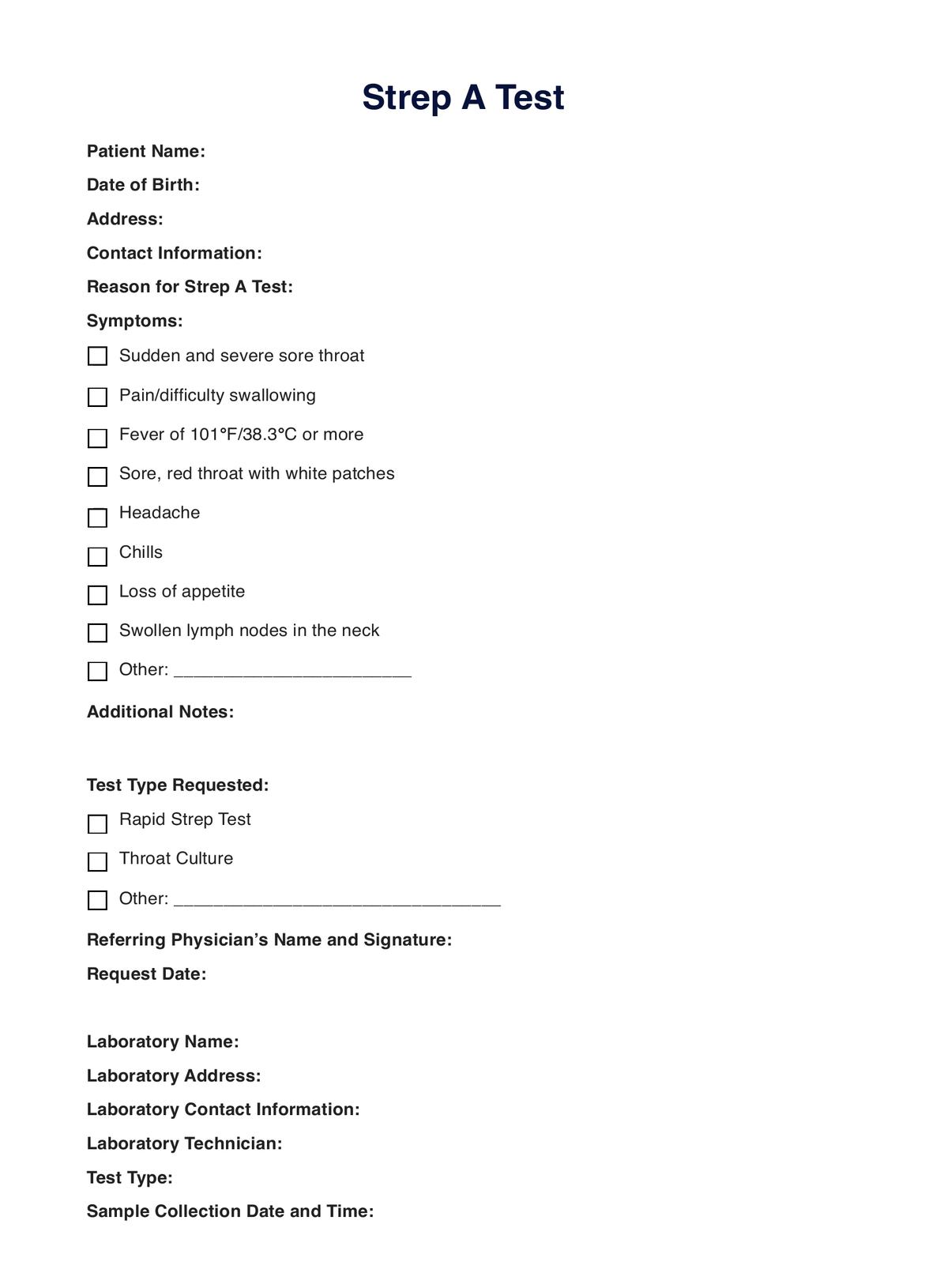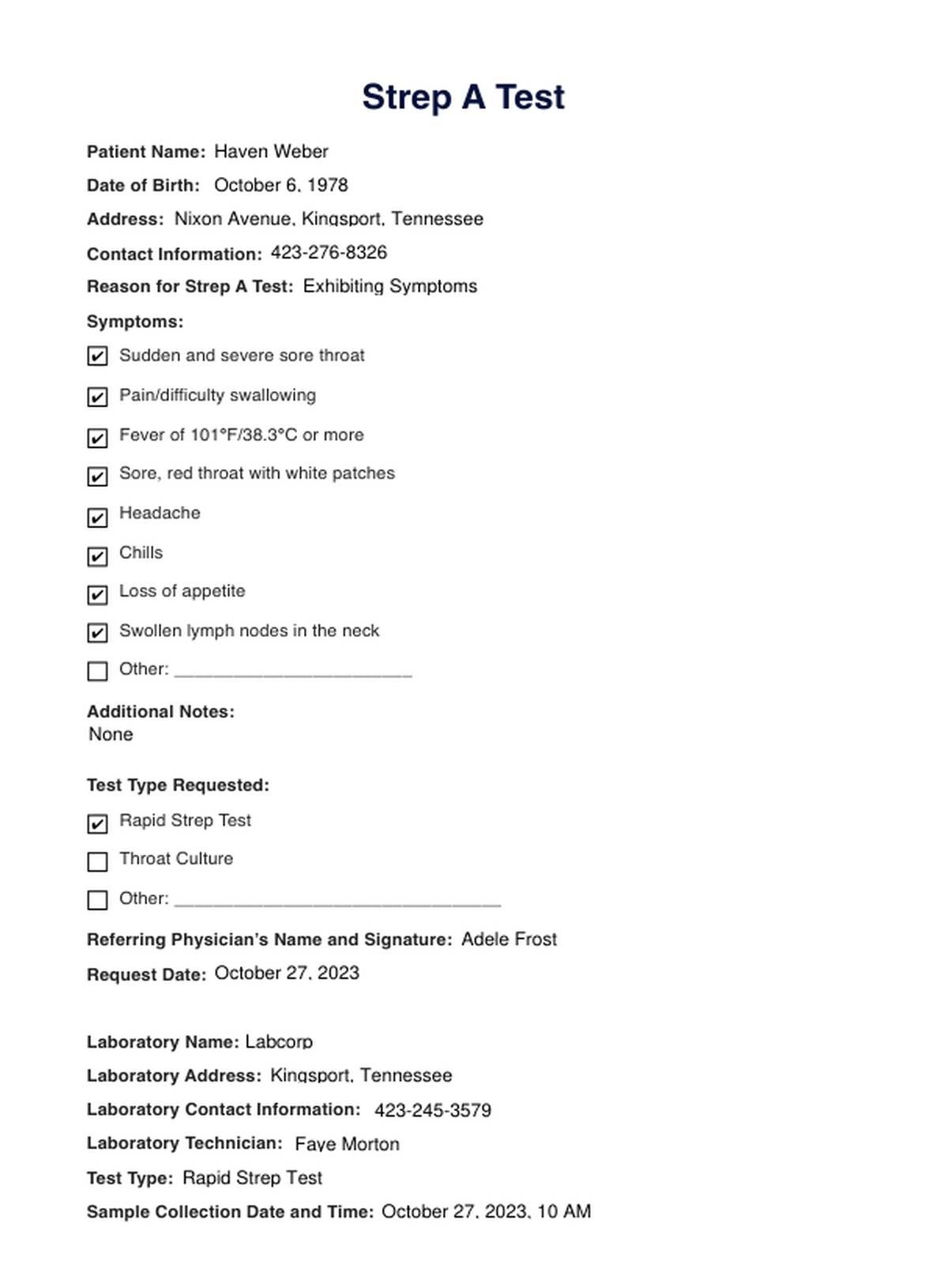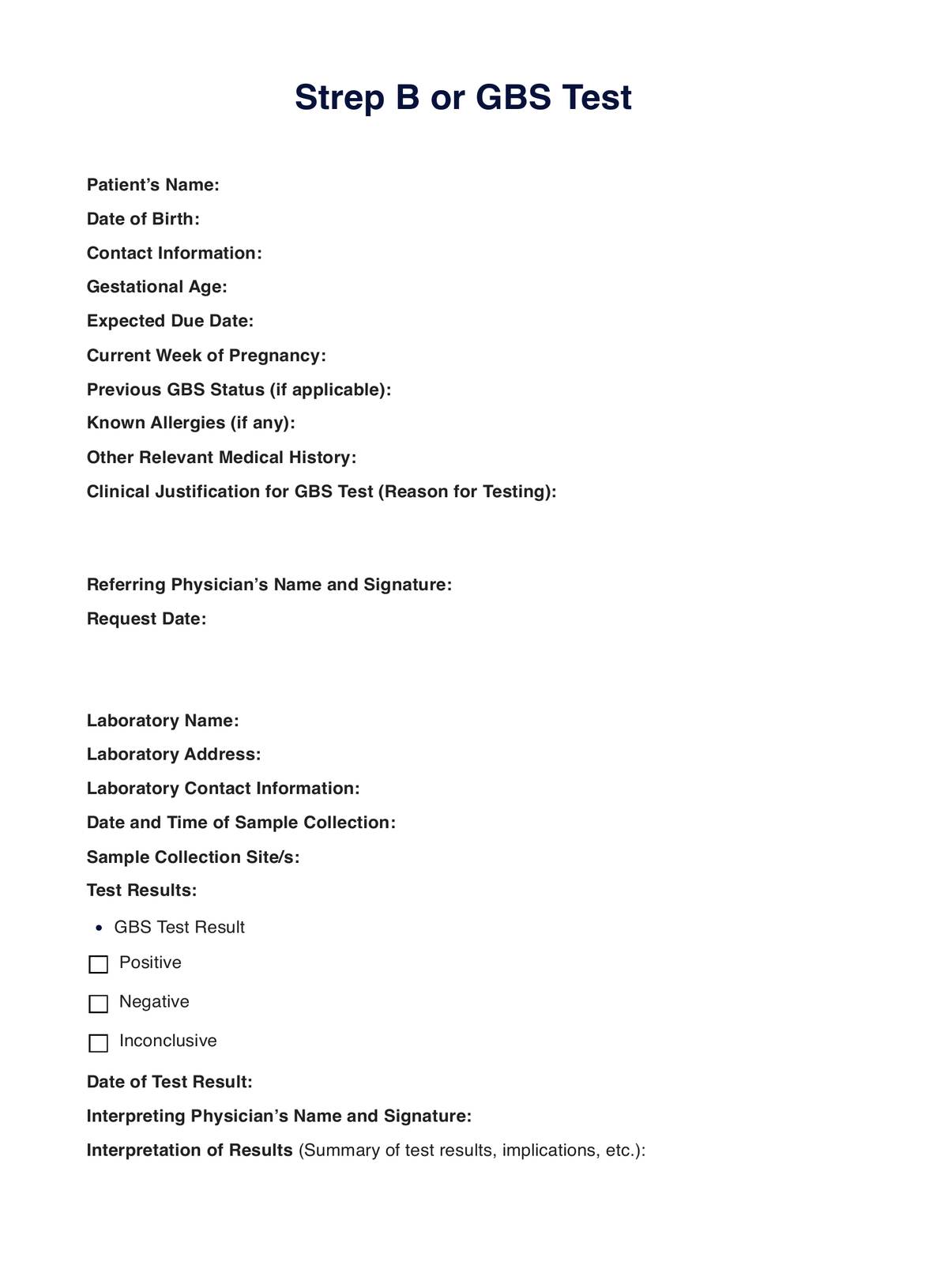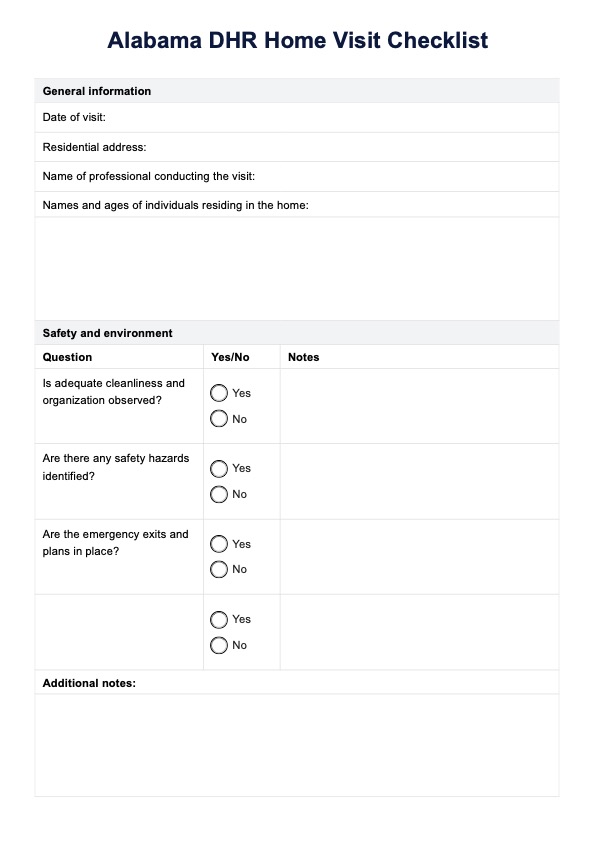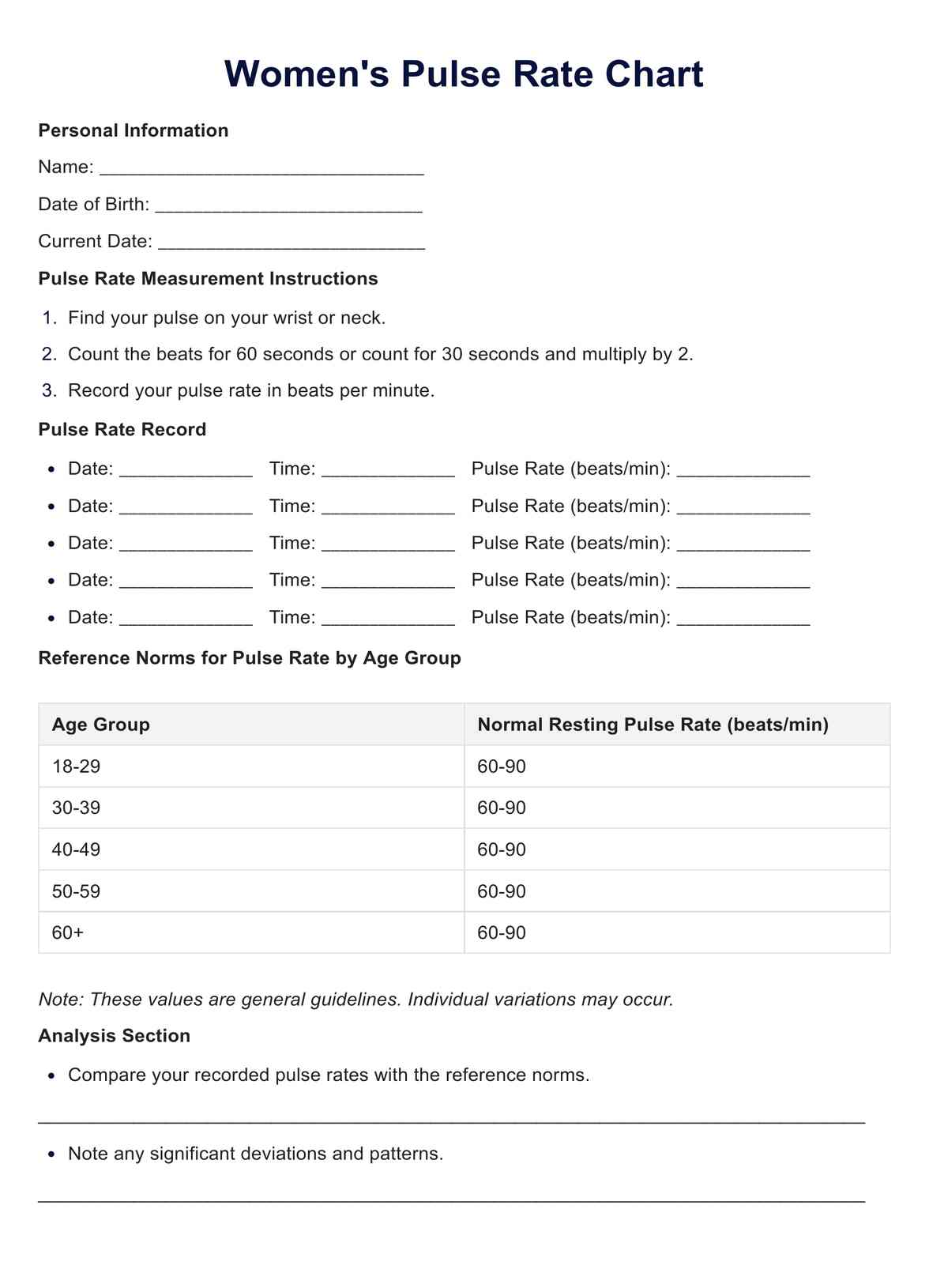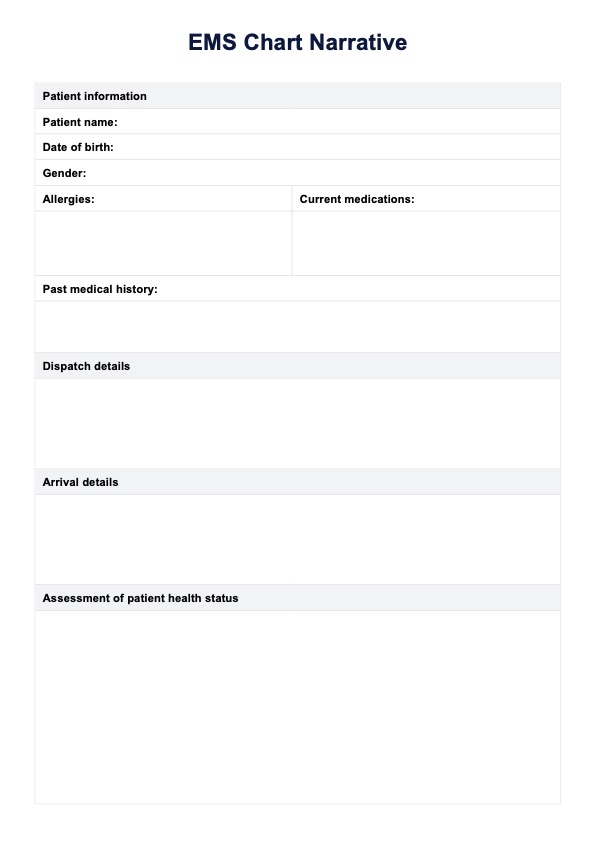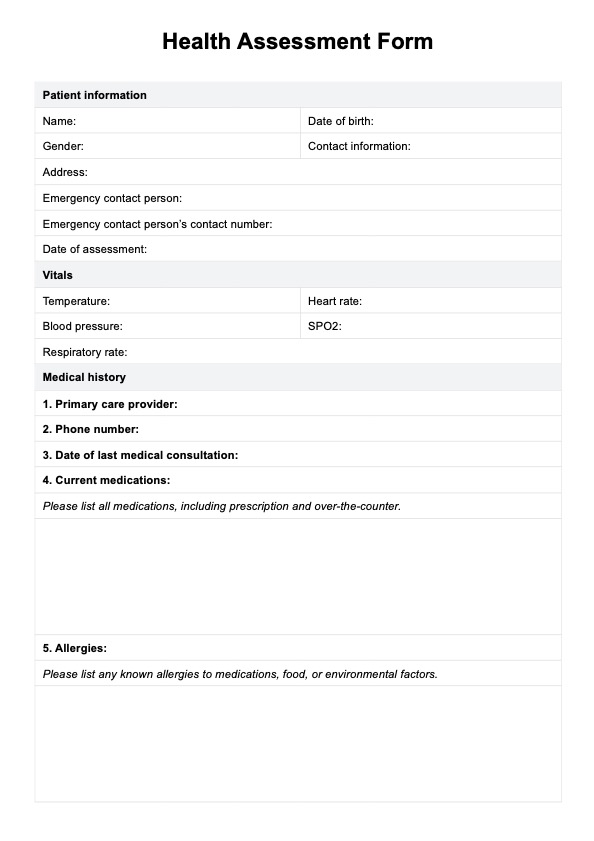Strep A Test
Learn more about the value of the Strep A test, its uses, general result interpretations, etc., and get a free template in our short guide.


What is a Strep A Test?
A Strep A test which is formally known as the Group A Streptococcus test, is a medical test used to detect infections caused by the Group A Streptococcus bacteria, which is commonly responsible for conditions like strep throat. The test is typically used to differentiate between strep throat and other viral infections with similar symptoms.
There are actually two primary types of Strep At tests. One of them is the Rapid Strep Test which identifies specific antigens associated with Strep A that elicit a specific immune response. The other one is the Throat Culture which directly looks for the presence of the Strep A bacteria.
As mentioned above, the purpose of requesting and conducting a Strep A test is to identify the cause of symptoms and differentiate between a viral infection and strep throat. Symptoms of one with Strep A are sudden and severe sore throat, swollen lymph nodes, a fever of higher than 101°F, and pain and difficulty while swallowing.
The procedure is pretty straightforward, wherein the healthcare provider will use a swab to collect a sample from the tonsils and back of the throat. The sample will then be sent to a laboratory to be processed.
Strep A Test Template
Strep A Test Example
How Does it Work?
Step One. Grab a Copy of the Template
Obtain a digital and printable Strep A Test template copy in circumstances of need by doing either of the following steps mentioned below:
- Click the “Download Template” or “Use Template” button
- Search “Strep A Test” on Carepatron’s template library’s search bar on the app or website
Step Two. Produce a Request
If you’ve determined that your patient needs the test based on your interview, analysis, physical examination, and observed physical symptoms, with our template, you can create a request in minutes. All you have to do is fill out the section designed as a request form with the essential information.
Step Three. Give the Form
As proof, you, your patient, or your fellow healthcare practitioner caring for the same patient must show the request form you filled out to the phlebotomist or practitioner in charge of collecting the sample. It’s only then that the sample will be collected and submitted to the laboratory to be processed.
Step Four. Write Analysis and Interpretations
Depending on the type of Strep A test being conducted, you may get the results within a few minutes or days. And as soon as you have it, you can analyze and interpret the results. Ensure that you have a record of your observations and findings by writing them down on the second half of the template that was designed as a document for notes like observations and findings.
Step Five. Store the Template Securely
Whether you used the template section designed as a request form or document, it’s best to store the template securely. If you’re looking for a place to store digital copies, Carepatron is a HIPAA-compliant, free patient record software that can safeguard your patient’s records for easy retrieval.
When Would you use this Test?
A Strep A test should be considered, requested, and used specifically when an individual exhibits symptoms suggesting the presence of Strep A throat infection. Here’s a list of symptoms you have to keep an eye out for:
- A severe and sudden sore throat
- Difficulty or pain when swallowing
- A fever that’s equivalent to 101°F (38.3°C) or higher
- A red and sore throat with white patches
- Headaches
- Chills
- Loss of appetite
- Swollen lymph nodes located in the neck
Do remember that the distinguishing factor between strep throat and a general sore throat is the presence of a cough. If a patient has a cough, it’s an indication of an absence of strep throat. Therefore, if the patient exhibits an extremely sore throat with the abovementioned symptoms, you must seek medical attention immediately.
Do note that a rapid test can be used and performed at any point of the course when a patient has a strep throat infection. Generally, it’s acceptable that parents wait for a day or two to observe their children’s symptoms and whether or not they will subside.
What do the Results Mean?
There are only two results a patient can get with the Strep A Test: positive and negative. Once the healthcare practitioner has confirmed that the patient underwent a Strep A test because of their symptoms, they may use the general interpretations below when formulating follow-up steps and treatment, which they can write on the free Strep A test template they downloaded:
Positive Result
If a patient has a positive result on a rapid strep test, it means that they have strep throat or are dealing with another Strep A infection. If this is the case, further testing is generally unnecessary since the positive result signifies the presence of streptococci, the bacteria that causes strep throat, or any other bacteria.
Negative Result
If a patient has a negative result on a rapid strep test, but the referring physician still suspects that the patient has strep throat, they may opt to order a throat culture. When the patient gets a negative throat swab test, it means that there aren’t any infections or bacteria in the individual's throat because the laboratory didn’t detect any strep bacteria in the sample. It’s most likely then that the patient doesn’t have strep throat.
Research & Evidence
There are more than a handful of research documents surrounding the Strep A test that underscores the utility and effectiveness in diagnosing Group A Streptococcal infections. Here are some key findings from relevant studies and reviews:
According to a comprehensive review by the CADTH, the rapid test for Group Streptococcal infections exhibits “a high level of accuracy and is considered cost-effective.” This is further supported by a study from a reputable medical website that says that the rapid Strep tests have a specificity of 98%, showing that out of 100 positive test results, 98 of them accurately confirm the presence of Group A Streptococcus bacteria. In fact, even the automated version of the Strep A test proves to be sensitive, specific, and has a positive predictive and negative value, making it a valuable diagnostic tool when diagnosing Group Streptococcus (GAS) pharyngitis in children.
To conclude, there exist research studies such as these that collectively affirm the reliability and effectivity of the Strep A test as a tool for diagnosing Group A Streptococcal infections because of its high diagnostic accuracy, specificity, and cost-effectiveness. In light of these, though, it’s recommended that healthcare practitioners who request and use Strep A blood tests keep themselves updated with any innovations to the test and further studies that explore the potential for Strep A test to assist with other medical conditions.
References
Faap, J. M. M. (2020, September 9). Rapid strep test procedure accuracy, false positive & negative. MedicineNet. https://www.medicinenet.com/rapid_strep_test/article.htm
Hendi, S.B., Malik, Z.A., Khamis, A.H. et al. High diagnostic accuracy of automated rapid Strep A test reduces antibiotic prescriptions for children in the United Arab Emirates. BMC Pediatr 21, 52 (2021). https://doi.org/10.1186/s12887-021-02516-3
Rapid Tests for the diagnosis of group a streptococcal infection: A review of diagnostic test accuracy, clinical utility, safety, and cost-effectiveness. Ottawa: CADTH; 2018 May. (CADTH rapid response report: peer-reviewed summary with critical appraisal).
Commonly asked questions
Primary care physicians, pediatricians, and specialists like an otolaryngologist and infectious disease specialists are the healthcare practitioners most likely to request a Strep A test.
Strep A tests are primarily used to identify if the patient has Strep A throat infection or discern if their symptoms are caused by Strep A or another virus.
For rapid strep tests, results usually come back within 10 to 20 minutes, while the throat culture strep test results can take 24 to 48 hours of processing before they become available.


